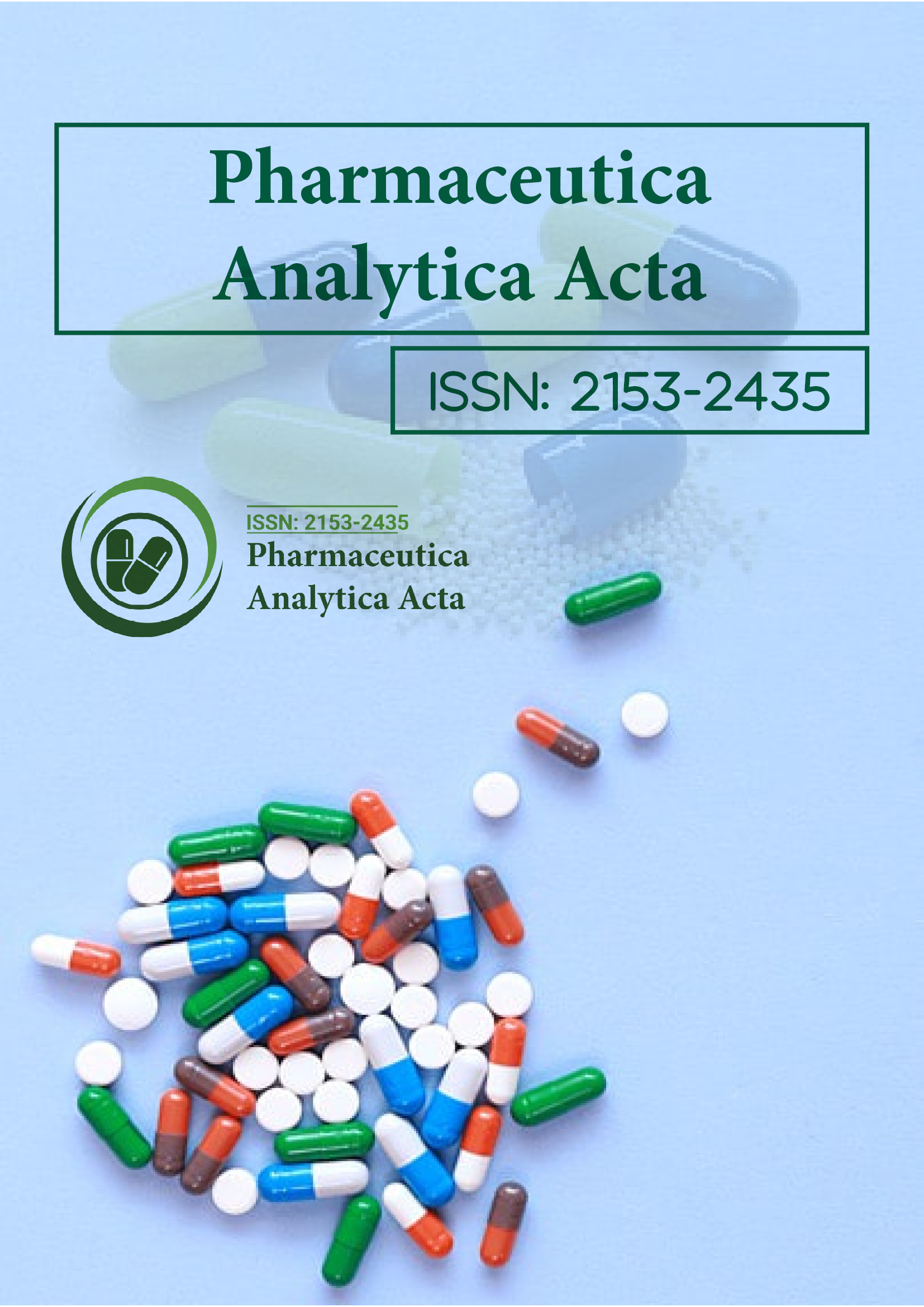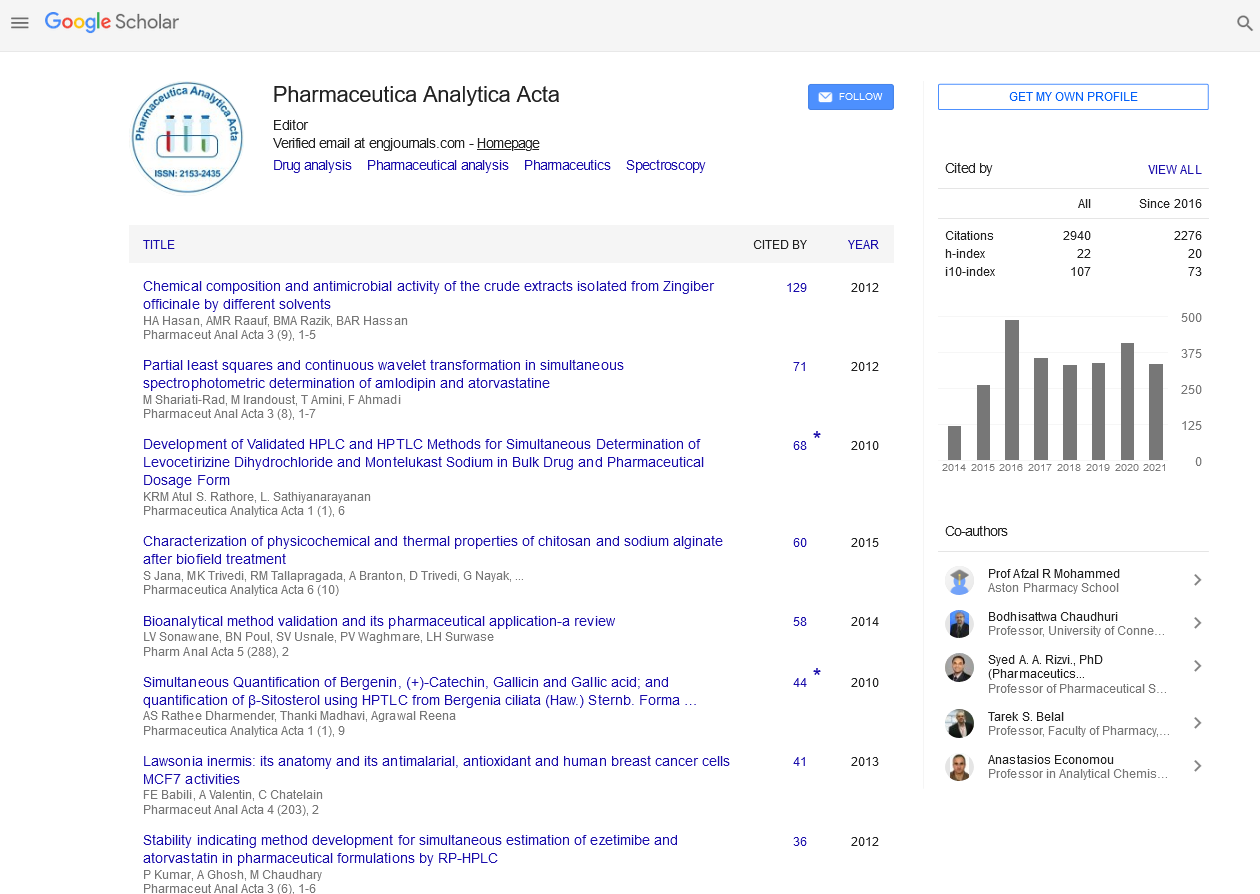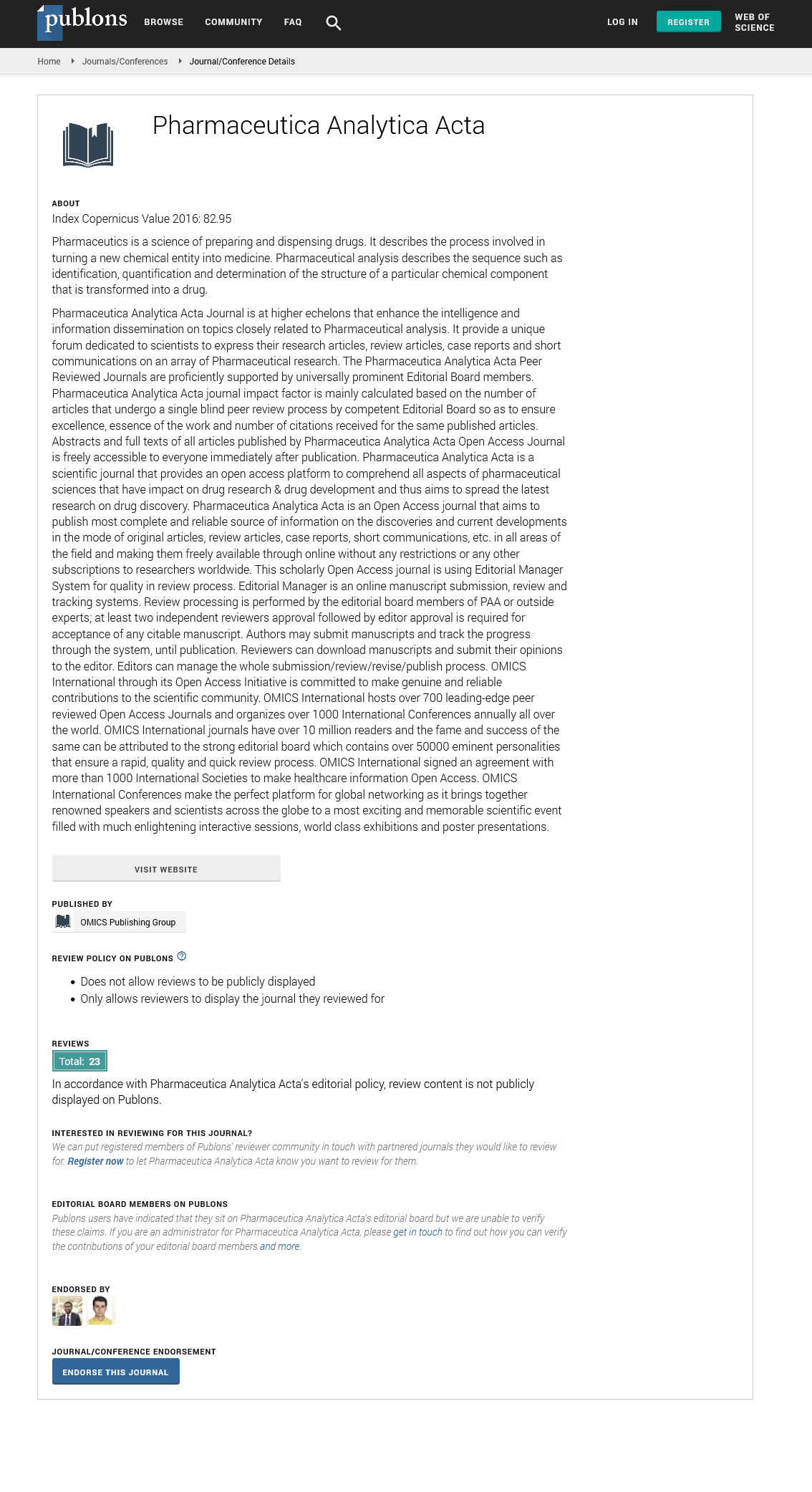Indexed In
- Open J Gate
- Genamics JournalSeek
- Academic Keys
- JournalTOCs
- The Global Impact Factor (GIF)
- China National Knowledge Infrastructure (CNKI)
- Ulrich's Periodicals Directory
- RefSeek
- Hamdard University
- EBSCO A-Z
- OCLC- WorldCat
- Publons
- Geneva Foundation for Medical Education and Research
- Euro Pub
- Google Scholar
Useful Links
Share This Page
Journal Flyer

Open Access Journals
- Agri and Aquaculture
- Biochemistry
- Bioinformatics & Systems Biology
- Business & Management
- Chemistry
- Clinical Sciences
- Engineering
- Food & Nutrition
- General Science
- Genetics & Molecular Biology
- Immunology & Microbiology
- Medical Sciences
- Neuroscience & Psychology
- Nursing & Health Care
- Pharmaceutical Sciences
Opinion Article - (2025) Volume 16, Issue 1
Harnessing Nanotechnology for Targeted Drug Delivery: Innovations and Challenges
Thomas Keller*Received: 27-Dec-2024, Manuscript No. PAA-25-28594; Editor assigned: 30-Dec-2024, Pre QC No. PAA-25-28594 (PQ); Reviewed: 13-Jan-2025, QC No. PAA-25-28594; Revised: 20-Jan-2025, Manuscript No. PAA-25-28594 (R); Published: 27-Jan-2025, DOI: 10.35248/2153-2435.25.16.808
Description
Nanotechnology has become an essential area of research in medicine, particularly for the development of more efficient and precise drug delivery systems. By utilizing materials and devices at the nanoscale, scientists aim to create systems that can deliver drugs directly to the targeted site in the body, minimizing side effects and improving the overall effectiveness of treatments. This method holds the potential to revolutionize how we treat various diseases, including cancer, cardiovascular diseases and neurological conditions.
In conventional drug delivery, medications are often administered systemically, meaning they circulate throughout the body, affecting both healthy and diseased cells. This can lead to undesirable side effects, as healthy cells may also be exposed to the drug. Nanotechnology offers a solution by enabling the design of drug delivery systems that can selectively target only the affected areas, such as tumor cells in the case of cancer. This targeted approach ensures that the therapeutic agents act directly where needed, reducing harm to healthy tissues and enhancing the therapeutic outcome.
Nanoparticles, which are typically between 1 and 100 nanometers in size, have unique physical and chemical properties that allow them to navigate the body in ways that larger particles cannot. These small particles can be designed to carry drugs and release them at specific sites. By modifying their surface properties, nanoparticles can be engineered to interact with certain cell types or tissue environments. This level of precision not only increases the efficiency of drug delivery but also reduces the amount of medication required, which can significantly lower costs.
One of the most significant applications of nanotechnology in drug delivery is in cancer treatment. Cancer cells often grow rapidly and have distinct biological characteristics compared to normal cells. Nanoparticles can be designed to take advantage of these differences, such as the higher levels of certain enzymes or the acidic environment found in tumors. By customizing the nanoparticles to bind specifically to cancer cells, researchers can ensure that drugs are delivered only to the tumor site. This approach has the potential to increase the potency of chemotherapy drugs while minimizing the damage to healthy cells, which is a common issue with traditional cancer therapies.
Another benefit of using nanoparticles for drug delivery is their ability to improve the bioavailability of drugs. Many drugs have low solubility in water, making them difficult for the body to absorb. By encapsulating these drugs in nanoparticles, scientists can enhance their stability and solubility, allowing for better absorption and more effective treatment. Additionally, nanoparticles can be designed to release the drug gradually over time, providing a sustained therapeutic effect and reducing the need for frequent dosing.
While the potential of nanotechnology in drug delivery is vast, several challenges remain that must be addressed before it can be widely adopted in clinical practice. One major obstacle is the potential toxicity of nanoparticles. Since they are so small, they can easily enter cells and tissues in ways that larger particles cannot. This increases the possibility of unintended interactions with healthy cells, which could lead to harmful side effects. Researchers are working to develop nanoparticles that are biocompatible and can be safely eliminated from the body after they have delivered their payload.
Additionally, the biological environment within the body can also pose difficulties for nanoparticles. Once administered, the particles must navigate through the bloodstream, which is full of proteins and enzymes that can alter their structure or cause them to break down. The immune system may also recognize the nanoparticles as foreign bodies and attempt to remove them. Overcoming these biological challenges requires continuous innovation in the design of nanoparticles that can evade the immune system while still performing their intended function.
In conclusion, the application of nanotechnology to drug delivery is one of the most exciting advancements in modern medicine. By allowing for the targeted and controlled release of drugs, nanoparticles can offer more effective treatments with fewer side effects. While there are still challenges to overcome, ongoing research and innovation continue to move the field forward, bringing us closer to realizing the full potential of nanotechnology in medicine. As we look to the future, it is clear that nanotechnology will play a significant role in shaping the way we treat diseases, making therapies more efficient, personalized and safer for patients.
Citation: Keller T (2025). Harnessing Nanotechnology for Targeted Drug Delivery: Innovations and Challenges. Pharm Anal Acta. 16:808.
Copyright: © 2025 Keller T. This is an open access article distributed under the terms of the Creative Commons Attribution License, which permits unrestricted use, distribution and reproduction in any medium, provided the original author and source are credited.


